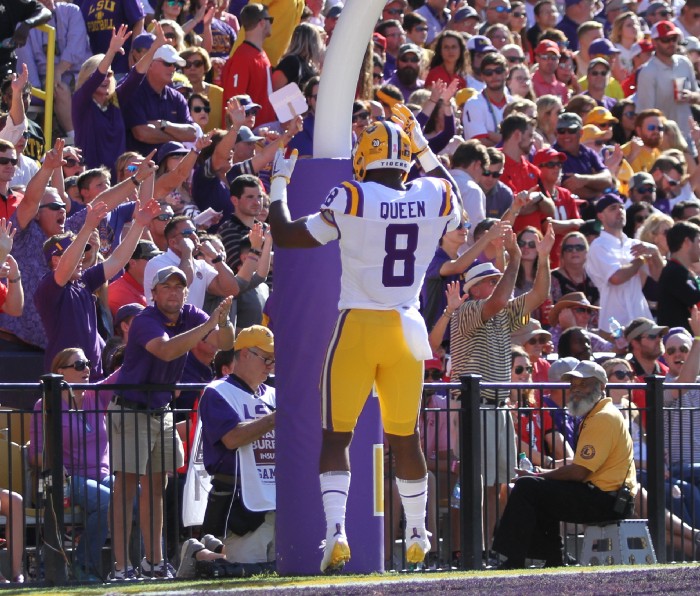The Eagles’ Draft Philosophy 2020 — Day One
Is drafting a receiver in round one the way to go?
Everyone knows the saying in the NFL, “You build your team through the draft,” and this is undoubtedly the case for the Philadelphia Eagles. Over the last few years, numerous analysts and fans have boldly declared that year’s draft as “the most crucial draft in the Doug Pederson era.” The 2020 NFL draft does not escape that reality. Howie Roseman and the Eagles front office understand the challenge ahead of them: the roster must become younger. Howie’s free agency signings this off-season have incorporated that philosophy. Besides resigning Rodney McLeod and trading for Darius Slay (both 29 years of age), every other signing was of a player 27 years or younger. Nevertheless, the Eagles need to continue to get younger via the draft and acquire quality players for pennies compared to their free-agent counterparts. Specifically for round one, the Eagles must find their budding star for years to come.
Day 1: Trade up or trade down
Looking at the landscape of the NFL draft, it’s safe to assume that before the twenty-first pick, the top three wide receivers will be gone. Therefore, the Eagles should strongly consider sending a package to a team selecting in the early teens if there is an opportunity to select a prospect like Henry Ruggs III. The cost for trading up, nevertheless, will be astronomical on draft day. Not only did the Eagles telegraph to the rest of the league that they are in all likelihood drafting a receiver round one by not pursuing or signing one in free agency, the teams drafting in the early teens all need receivers: Jets (11), Raiders (12), 49ers (13), and the Broncos (15). Thus, these teams will either ask for an astronomical amount of picks and players in a trade or select a receiver themselves. Hence, it is highly probable that the front office decides, rightfully, that the price outweighs the benefit of moving up in the draft.
My Top 5 Wide Receivers in the NFL 2020 Draft
- Jerry Jeudy (Head and shoulders above the rest)
- CeeDee Lamb
- Henry Ruggs III (Best Fit)
- Tee Higgins
- Laviska Shenault Jr (The risky pick)
However, staying at 21 comes with its drawbacks at well. Besides Tee Higgins, whose lack of speed makes him a poor fit for the Eagles, no other receiver is worthy of the 21st pick. This includes the commonly mocked Justin Jefferson and Denzel Mims.
Although Jefferson has the production and tape to be selected in the middle of the first round, his ideal fit is in the slot. He’s a matchup nightmare on the inside: put a smaller corner on him, his elite body control will dominate in jump ball situations, and if a longer corner defends him, Jefferson’s agility and route running will put his cornerback on his heels. Moreover, even if hypothetically Justin Jefferson is capable of producing outside the hashes, certainly, the Eagles would not be maximizing his skill set.
Furthermore, almost all the Eagles’ playmakers operate in the middle of the field, adding Jefferson, especially in the first round, seems redundant.
As for Mims, I’m always wary of someone who shoots up draft boards after the combine. The tape never cries 4.38 forty-speed, and his route tree is limited, although that may merely be due to him playing at Baylor. Tee Higgins, in my opinion, does everything Mims does better, besides vertical speed. However, Higgins route precision is undoubtedly ahead of Mims. Hence, if the Eagles want to select a wide receiver with the 21st pick, Tee Higgins would be the ideal selection, even though that selection itself is not ideal. This lack of ideal receivers to draft at twenty-one leads us to the next two possible scenarios for the Eagles during the initial day of the draft.
Not Drafting a Receiver Day One

Despite their woes at the receiver position, the Eagles are not mandated to select a receiver in the first round. Howie Roseman’s other options should include Patrick Queen and Kenneth Murray, who are both criminally underrated and can fill a need at the linebacker position; Xavier McKinney and Grant Delpit, who can develop into perennial pro bowlers given the right coaching. Nonetheless, in the Eagles perspective, they signed three safeties in McLeod, Mills, and Parks, and typically play in a base big nickel formation with solely two linebackers on the field. For the front office, selecting a linebacker or safety in the first round is a definite misallocation of resources.
Side Note: The Eagles front office must value linebackers more.
Trading Back
The final and the most likely outcome during the first day of the draft is for the Philadelphia Eagles to trade back. Trading back results in the Eagles having the ability to select any receiver without reaching. If the Eagles select in the range of 28–32 or even trade out of the first round to early in the second round, Laviska Shenault, KJ Hamler, Jalen Reagor, and Brandon Aiyuk are all player who can produce their rookie season. Furthermore, these prospects likewise have enough raw ability to develop into studs, putting Aaron Moorehead’s coaching skills to the test. Moreover, these four prospects all command incredible play speeds (to a lesser extent with Shenault) despite their forty-times, which is a trait the Eagles desperately need to incorporate into their offense: trading back increases the options for Howie Roseman.
The first round philosophy for most NFL teams is to draft the best available player over the most crucial need. However, the Eagles are extremely depleted at the receiver position, and therefore will likely need to manipulate their draft position to select a receiver without reaching.
Click here for The Eagles’ Draft Philosophy 2020 — Day 2
Follow us on Twitter @flyphillyfly2
Featured photo from Tammy Anthony Baker